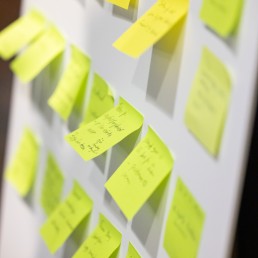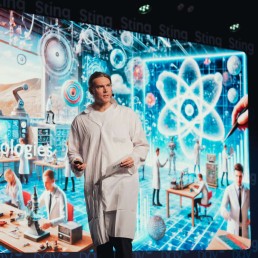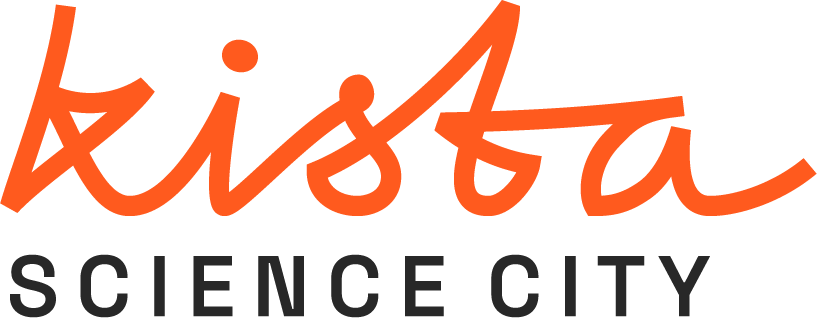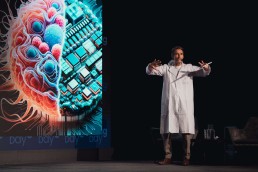Made in Kista: AI on Swedish terms
Updated December 2025
Made in Kista: AI on Swedish terms
Artificial intelligence is moving beyond clever applications and into the systems that run our societies. As it becomes embedded in healthcare, finance and education, a central question emerges: where does the technology run, and who controls the data behind it?
For Europe, and for Sweden, the answer is increasingly about AI sovereignty. The EU’s new AI Act is raising the bar for security and accountability, while organisations also want reassurance that sensitive data stays within national borders. Together, these demands are accelerating the push for secure, local solutions. In Kista, that shift is visible with new facilities and projects underway.
Secure AI in Kista
This summer, 6G AI Sweden launched a sovereign AI cloud at atNorth’s data centre in Kista. Built on NVIDIA’s reference architecture and powered by H200 GPUs, the facility gives Swedish organisations access to advanced AI capacity within national borders. The operation complies fully with GDPR and the AI Act, and runs entirely on renewable energy, with surplus heat recycled into Stockholm’s district heating grid. With a multi-billion-SEK hardware investment, the project demonstrates long-term commitment and offers a local alternative to foreign-controlled infrastructure.
The need for such alternatives is increasing. Even when data is stored on servers in Sweden, it can fall under foreign legislation if the provider is headquartered abroad. The US Cloud Act is one example, allowing American authorities to request data from US-owned companies regardless of where their servers are located. In an uncertain geopolitical environment, this legal distinction has become central for public institutions and regulated sectors working with sensitive information.
This is the challenge 6G AI Sweden aims to address. As a Swedish-owned provider operating on Swedish territory, the company gives organisations a way to run sensitive or regulated AI workloads in an environment aligned with domestic and EU legislation. The investment in high-performance compute also reflects a broader shift: the need to build capability across the AI stack, from physical infrastructure to the services and applications built on it.
However, the move toward sovereign AI is not about cutting ties with global cloud providers. Large global cloud providers (hyperscalers) will remain essential, and Sweden has no realistic path to replacing them at scale. What matters is having secure domestic options for information that requires stronger protection. For most organisations, this points to a hybrid future where sensitive workloads run locally while other operations remain on international platforms.
Another company, Berget AI, has opened Sweden’s first fully Swedish-owned AI infrastructure and inference service. The facility, also located in Kista, is designed to ensure that no data leaves the country, offering a way for organisations to avoid exposure to foreign legislation. Within months of launch, Berget AI was trusted by Riksbanken with sensitive workloads — a clear signal that their services meet the needs of Sweden’s most security-conscious institutions.
Taken together, these investments underline that Sweden’s sovereign AI capacity is no longer a vision but a resource being built in practice.
From ambition to adoption
Europe’s reliance on non-European infrastructure has long been viewed as a vulnerability, limiting control over both security and data. The AI Act is designed to change that, setting clearer standards for traceability, risk management and accountability. For Swedish organisations, the challenge is now less about knowledge and ambition, and more about moving from isolated pilots to large-scale use on platforms that meet these requirements.
This is where domestic infrastructure becomes crucial. Local providers anchored in Swedish and European legislation lower the threshold for public institutions and regulated sectors to deploy AI responsibly. They offer an environment where security, jurisdiction and compliance are built in from the start.
Sweden is well positioned to build and maintain this capacity over time. Low-cost electricity and a cold climate lower operating costs for energy-intensive AI workloads. Combined with stable national governance and a mature innovation ecosystem, these factors create strong conditions for long-term investment in domestic AI infrastructure.
By expanding sovereign infrastructure and anchoring capability locally, Sweden can move from early experimentation to broad adoption in ways that ensure trust, competitiveness and resilience. The capacity now being built in Kista is one example of how this transition is taking shape, giving Sweden the opportunity to develop and deploy AI on its own terms.
Eight Swedish scaleups head to Munich for Access Germany
The internationalisation of Swedish innovation continues. This week, we bring eight scaleups to Munich for Access Germany — a market entry programme organised by Kista Science City and the German-Swedish Chamber of Commerce.
From 29 September to 1 October, these companies will meet potential customers, investors and industry leaders, and gain insight into one of Europe’s largest and most innovative tech ecosystems.
Meet the companies
The selected scaleups represent sectors ranging from climate tech and automotive software to advanced materials.
We welcome:
- Remotive Labs: Helps automotive teams build, test, and iterate vehicle software at speed.
- Manomotion: Enables machines and devices to be controlled using simple hand movements.
- Nobula 3D: Develops the world’s first affordable 3D printer for glass.
- Cellufy: Offers a sustainable, bio-based alternative to plastic for packaging and products.
- Mediaflow: A platform that helps teams securely manage and share digital content.
- MyVox: MEMS technology transforming how sound and active cooling are integrated in compact electronics.
- NitroCapt: Produces fossil-free nitrogen to make fertilizers climate neutral.
- Smartport: Turns parking areas into smart energy hubs with solar, storage and EV charging.
Access Germany: Tailored market entry
The programme is designed to help fast-scaling deep tech, hardware and B2B businesses shorten the path to international growth.
This week, the delegation travels to Munich for three days of meetings, workshops and networking. Scheduled back-to-back with Bitz & Pretzels, a major European startup gathering, the visit creates opportunities to connect with the wider innovation community while focusing on targeted customer and investor engagements.
Throughout the programme, the companies will receive:
- Exclusive meetings with customers, partners and investors
- Insights into navigating the German business landscape
- Workshops to refine messaging and market positioning
“Breaking into new markets is rarely about technology alone,” says Arash Sangari, Programme Manager at Kista Science City. “It’s about being able to explain your value, build trust quickly and meet the right people at the right time. Access Germany is designed to give companies that platform — compressing months of effort into a few intensive days.”
Upcoming programmes
Later this autumn, applications will open for the 2026 Access programmes, targeting the US, Canada, UK and Germany.
Interested in joining future programmes? Contact arash.sangari@kista.com.
—
Access Germany is organised by Kista Science City and the German-Swedish Chamber of Commerce, with funding from the European Union and Region Stockholm.
New paths for Swedish research: Test Drive shows the way
Sweden has a strong tradition of research. This is reflected in the quality of its universities and institutes, and it underpins the country’s reputation for innovation. Yet many ideas still stall in the early stages, left on the shelf before they can be developed into companies. The reasons are rarely about scientific quality; they are about what comes next.
Traditional models — from licensing agreements to longer incubator tracks — play an important role, but they don’t always reach researchers at the point where ideas are just beginning to take shape. Turning research into resilient businesses requires access to infrastructure, early business development and connections to industry. Without those building blocks, promising results risk getting stuck before they reach the market.
That is where new approaches are needed: formats that combine technical insight with business perspective and give early teams the confidence and networks to move forward. One example of such a format is Test Drive, a programme developed and run by our sister organization Sting. During spring 2026 Sting will launch a Test Drive track within Semiconductor Arena, a national initiative to strengthen Sweden’s semiconductor ecosystem.

A first look at entrepreneurship
Test Drive is a short, workshop-based programme that lets researchers and innovators explore what it would mean to take an idea further. Over four to five sessions, teams bring their own ideas — often two or three people working together — and examine them through a startup lens: could they attract funding, what role would each person need to take, and what would it mean in practice to move forward? The programme ends with a pitch event, giving participants direct feedback from investors.
“We want to give researchers and innovators a picture of what this journey could look like,” says Raoul Stubbe, business coach at Sting. “What does it mean for me personally? What steps would I need to take for this to happen? That’s often what flips a switch — when participants start to think, ‘maybe this really could become something.’ We want people to leave with the feeling that they want their ideas to come out and make a difference in the world.”
Lessons from Test Drive
For many participants, the biggest gain is seeing their work from a completely different angle — one that stands in contrast to the priorities of an academic career. Raoul explains:
“In academia, publication and tenure often come first. Building a company isn’t something you can do on the side. It requires full focus and a different way of thinking. The programme doesn’t make the decision for them, but it shows what’s required — and often gives people the confidence to decide whether to take the leap.”
The outcomes reflect that. Around half of those who complete Test Drive go on to start a company — a high rate compared to other formats. Others choose not to, but highlight the investor feedback, exposure and new perspective as valuable in themselves. “Even if the company doesn’t become what you first imagined, the experience opens up opportunities and a new way of looking at what’s possible. That’s one of the biggest wins,” Raoul says.
Valentin Dubois is CEO and co-founder of Dappler Labs, a startup developing quality-control technology for semiconductor manufacturing. He took part in a Test Drive programme in 2023 and recalls:
“What Test Drive really taught us was how important it is to package an invention into something that can be sold. For academics, that’s not obvious at all. They pushed us to think in terms of a minimum viable product, and also how to pitch a highly technical idea in a way people outside our niche could understand.”
Bridging research and business
Test Drive doesn’t only affect individual decisions. It also reshapes how researchers relate to investors, and vice versa. Many enter the programme with fixed views: researchers seeing investors as focused only on sales, and investors doubting whether researchers can actually lead companies. In Test Drive, those assumptions are tested. By working side by side, participants begin to see the value in each other’s expertise. “It’s about creating respect for the strengths each side brings,” Raoul explains.
The shift can also extend to how researchers view themselves. Raoul points to a particular type of academic who could play a bigger role in bridging this gap — what he calls the entrepreneurial scientist:
“These are individuals who match the rigour of traditional science with the curiosity and drive needed to build companies. Test Drive helps them recognise that identity in themselves — quite often for the first time. The programme shows that entrepreneurial ambition is not at odds with academic credibility, but a way to amplify the impact of their work.”

Moving forward
Test Drive is not a substitute for incubators, accelerators or licensing pathways. But it fills a crucial gap at the beginning of the journey, giving teams a structured first step that many existing models don’t provide. And it can be adapted. “These formats are portable,” Raoul Stubbe notes. “They can be tailored to new domains by adding the right pieces — access to infrastructure, industry mentors, a clear end goal. The principle is the same: help early teams see the path and take the first step.”
That adaptability has already been shown in dedicated tracks on health, energy and AI. The next step is deep tech and semiconductors. Within Semiconductor Arena, Sting will run a Test Drive track to help early-stage teams test and refine their ideas, and move them closer to implementation. With long development cycles and high capital needs, this is a field where early clarity is especially important for emerging teams.
Formats like Test Drive highlight a larger need in Sweden’s innovation system. The challenge is not producing strong research, but making sure it translates into companies and industries. Without that translation, the risk is not only missed growth, but dependency. As Raoul puts it: “This need is not new, but it is more urgent than ever today. Sweden measures up well against the US and China in research, but our weakness in transferring knowledge leaves us dependent on American and Chinese technology.”
Test Drive is one example of how that gap can be addressed. For Sweden, the task now is to make sure more such models take root — so that world-class ideas translate into the businesses, capabilities and resilience the country needs.
—
Semiconductor Arena is co-funded by the European Union and Region Stockholm, and is run by Kista Science City, KTH, RISE and Sting.



